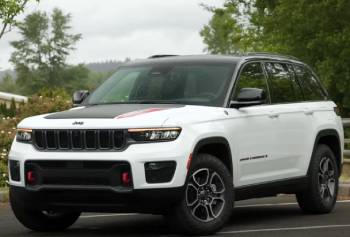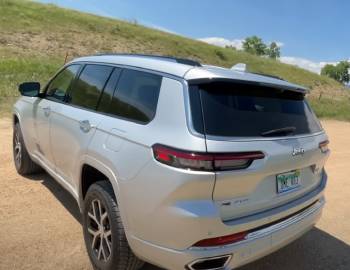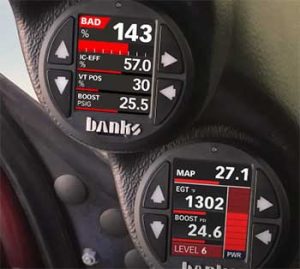The Jeep Grand Cherokee has long been a favorite among off-roading enthusiasts and city dwellers alike. With a myriad of trim levels and options to choose from, two stand out for their unique offerings: the Trailhawk and the Overland.
Let’s dive into the pros and cons of the Grand Cherokee Trailhawk and Overland to determine which might be the right fit for you.
A Brief Comparison Table
| Feature/Aspect | Trailhawk | Overland |
| Performance & Capability | Quadra-Drive II 4×4 system, Quadra-Lift Air Suspension, Skid Plates | Balanced 4×4 capability, Standard Suspension |
| Exterior Styling | Red tow hooks, Black hood decal, All-Terrain Tires | Chrome accents, 20-inch Aluminum Wheels |
| Interior & Comfort | Black leather and suede seats, Red stitching, Uconnect 4 with 8.4-inch display | Nappa leather-trimmed seating, Alpine Audio, Wood accents, Uconnect 4C NAV with 8.4-inch touchscreen |
| Price & Value | Higher due to off-road specializations | Premium due to luxurious touches |
| Safety Features | Standard Jeep safety features + additional protection for off-roading like skid plates | Standard Jeep safety features |
The Grand Cherokee Trailhawk

Pros:
- Off-Road Ready:
Designed with rugged terrain in mind, the Trailhawk is built with a Quadra-Drive II 4×4 system, making it more capable on tricky terrains.
- Red Tow Hooks:
Aesthetically speaking, those distinctive red tow hooks are not only functional but add a touch of flair, letting everyone know it means business.
- Rough and Ready Interior:
With black leather and suede seats with red accent stitching, it’s as stylish as it is durable.
- Hill Descent Control:
This provides smooth and controlled hill descent in rough terrain without the driver needing to touch the brake pedal.
Cons:
- Fuel Efficiency:
Given its off-road capabilities, the Trailhawk can be less fuel-efficient than other trims.
- Price Point:
With all its specialized features, it tends to be pricier than its counterparts.
The Grand Cherokee Overland

Pros:
- Luxurious Touches:
The Overland leans into luxury with its Nappa leather-trimmed seating, Alpine Premium Audio System, and genuine wood accents.
- Advanced Tech:
Equipped with Uconnect 4C NAV with an 8.4-inch touchscreen, it ensures you’re always connected.
- Panoramic Sunroof:
Bringing in natural light, the dual-pane sunroof adds a sense of spaciousness.
- Towing Capabilities:
Surprisingly, the Overland offers impressive towing capacity, making it a versatile choice.
Cons:
- Not as Rugged:
While still capable, the Overland is not as off-road-focused as the Trailhawk.
- Higher Maintenance:
The luxurious touches might require more maintenance and care over time.
The Real User Approach
Imagine setting off on an adventurous weekend getaway. If you’re headed deep into the wilderness, encountering muddy trails, rocky paths, and perhaps even a stream or two, the Trailhawk might be your best companion. Its off-road prowess ensures you tackle challenges with confidence.
On the other hand, if your journey involves long stretches of highway with occasional off-road detours and you value comfort and luxury, the Overland could be your choice. Imagine cruising with that panoramic sunroof open, your favorite tunes playing on the Alpine system, all while seated in plush Nappa leather.
Also Read: Is Having AAA Tire And Wheel Insurance Wise?
Key Differences Between Grand Cherokee Trailhawk and Overland
Jeep Grand Cherokee, a testament to versatility, offers multiple trims, each catering to different user preferences.
However, when comparing the Trailhawk and Overland, some distinctions stand out more prominently. Let’s deep dive into these key differences.
Performance and Capability
Trailhawk:
- Built for the Off-Road: The Trailhawk comes with the Quadra-Drive II 4×4 system, which is one of Jeep’s most advanced four-wheel-drive systems. It provides excellent traction, especially on challenging terrains.
- Air Suspension: It features the Quadra-Lift Air Suspension system which adjusts ground clearance depending on the requirement.
- Skid Plates: Designed for rugged terrains, the Trailhawk includes skid plates to protect the underbody from damage.
Overland:
- Balanced Performance: The Overland, while still offering 4×4 capability, is tuned more for a balanced drive – good for both city roads and occasional off-road adventures.
- Standard Suspension: While it has a competent suspension system, it doesn’t feature the adaptive air suspension of the Trailhawk.
Exterior Styling
Trailhawk:
- Distinct Look: With red tow hooks and black hood decal, the Trailhawk showcases a more aggressive stance, signaling its off-road readiness.
- All-Terrain Tires: These are better suited for off-road conditions, providing grip and stability on uneven surfaces.
Overland:
- Elegance Personified: The Overland leans towards a refined look with chrome accents, giving it a luxurious appearance.
- 20-inch Aluminum Wheels: Adds to its premium appeal and offers a smoother ride on highways.
Interior and Comfort
Trailhawk:
- Rugged Interior: Black leather and suede seats with red accent stitching ensure the interior is as rugged as the exterior. It’s built to handle the rough and tumble of off-road adventures.
- Uconnect 4 with 8.4-inch display: This system ensures you’re connected even in remote terrains.
Overland:
- Luxury on the Inside: The Overland sports Nappa leather-trimmed seating, Alpine Premium Audio System, and genuine wood accents, ensuring every journey is ensconced in luxury.
- Advanced Tech: The Overland boasts of the Uconnect 4C NAV with an 8.4-inch touchscreen, providing superior connectivity and entertainment options.
Price and Value Proposition
Trailhawk:
- Higher Price Point: Given its specialized off-road features, the Trailhawk tends to be priced higher than some other trims but offers value for those looking for rugged capabilities.
Overland:
- Premium Feel, Premium Price: The Overland, with its luxurious touches, also commands a higher price point but offers an unmatched premium experience for those valuing comfort.
Safety Features
Both the Trailhawk and Overland are equipped with a myriad of safety features due to Jeep’s commitment to driver and passenger safety.
However, the Trailhawk’s off-road orientation means it has some additional protective features like skid plates.
Also Read: Differences Between Mastercraft Courser Trail HD And BFG KO2 Tires.
FAQ Section
While the Grand Cherokee is the model name, Trailhawk refers to a specific trim level focused on off-road capabilities.
The Trailhawk trim is designed for maximum off-road performance with features like Quadra-Drive II 4×4 system, skid plates, and hill descent control.
The Trailhawk trim is typically considered the best for off-roading due to its specialized features for rough terrains.
It stands out with its enhanced off-road capabilities, distinctive red tow hooks, and unique interior design with red accent stitching.
As of my last training data in September 2021, the Trailhawk wasn’t discontinued. However, car models and trims are frequently updated, so it’s best to consult Jeep’s official announcements for the latest.
It depends on your needs. Trailhawk is tailored for off-road adventures, while the Trackhawk is designed for speed and performance with its powerful V8 engine.
Final Thoughts
Whether you’re leaning towards the rugged charm of the Trailhawk or the luxurious allure of the Overland, it’s clear that Jeep’s Grand Cherokee offers something for everyone. Analyze your driving habits, the terrains you often tackle, and your preference for luxury vs. ruggedness. Whatever you choose, the open road (or trail!) awaits.
In conclusion, the choice between the Trailhawk and Overland boils down to personal preference. If off-roading and ruggedness top your list, the Trailhawk stands out. However, for a blend of luxury and capability, the Overland is hard to beat.



